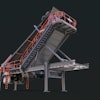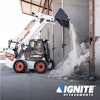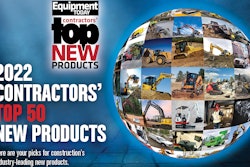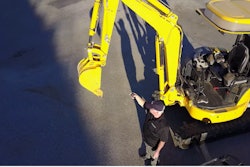
It’s fitting that my second issue as Equipment Today editor would feature increased automation technologies of dozers, as well as telematics, robotics and machine control. As the construction labor shortage continues, contractors will need to rely on automation and technology more than ever before to get the job done. Despite construction job openings plummeting by 71,000 in June 2022, they rebounded in July by 31,000 jobs, according to recent Associated Builders and Contractors (ABC) reports on the U.S. Bureau of Labor Statistics’ Job Opening and Labor Turnover Survey data. On a year-over-year basis, construction industry employment has increased by 311,000 jobs, or 4.2%, ABC said in its latest analysis, released August 5.
While economists' conflicting whispers of a recession in the United States continue, an economic slowdown likely will not alleviate the lack of skilled, available workers for U.S. construction jobs. Thus, contractors have no choice but to take on the work and figure out how to do their jobs as efficiently as possible. Increased equipment technology and a focus on fleet fuel efficiency should help. In this issue, be sure to read Technology Editor Charles Rathmann’s coverage of robotics to assist with precision and digging construction processes and Garry Bartecki’s “Running the Business” column on balancing recruitment and retention needs with higher labor burden costs. Both articles tell a story of the current construction industry market from multiple perspectives, ranging from jobsite productivity increases to contractor financials. Both writers make it clear that investing in the right people for the job, along with the technologies to make said jobs smoother, are paramount priorities for the construction industry going into the third quarter of 2022.
Speaking of the 2022 economy, at its mid-year work truck industry market update, the National Truck Equipment Association (NTEA) emphasized the strength of the commercial vehicle industry, a leading indicator for construction contractors concerned about fleet costs and maintenance. However, the commercial vehicle industry has run into significant challenges like chassis availability, input shortages and extreme inflation on materials like steel in 2022. The ongoing COVID-19 pandemic, the war in Ukraine and skyrocketing U.S. diesel prices that currently are increasing faster than freight can grow make the near-future U.S. economy and thus the work truck market even more difficult to predict.
In particular, diesel price hikes have put “rather extreme cost pressure on the fleets who see fuel as exactly what it is for them – a cost,” said Stephen Latin-Kasper, NTEA senior director of market data and research at the July 19 work truck industry market update. “You end up with [fleets] having difficulties staying on budget for everything else.”
Shipments for Class 8 heavy-duty vehicles and tractors lagged in the first half of 2022, as well, according to the NTEA.
“There are still trucks available – just not as many as fleets want right now,” said Stephen Latin-Kasper, NTEA senior director of market data and research. “In the meantime, what most fleets have done is focused on maintenance and repair. They have also repurposed some vehicles to be useful for applications they weren’t previously used for.”
Latin-Kasper, an expert economic forecaster, emphasized that a recession is still uncertain but that the economy is certainly slowing. Construction contractors would be wise to manage their fleets as Latin-Kasper described, with preventive maintenance being a top priority over ordering new trucks. Perhaps contractor companies can use the savings from refraining from truck purchases toward additional labor costs incurred, including higher wages and recruitment fees.
Elsewhere in this issue, other construction experts delineate jobsite scenarios and how to remain safe while still using their equipment to the best of their and their crew's ability. I hope you find these articles as engaging as I did while editing them. Positioning oneself as an expert on any one topic can be uncomfortable, but one industry I know I have expertise in is the writing and editing profession. Generally, I know when to write an article myself and when to assign it to someone else more versed in industry verbiage or higher skilled in publishing, whether that be in-house or a freelancer. I relish writing and adore editing my writers’ work.
In this issue, our readers will find several articles written or updated by me, as well as a mix of staff-written stories and manufacturer expert insights. Going forward, I would like more contractor and industry freelancer voices in these pages. If you are a construction contractor or freelance writer with a construction background interested in writing for the magazine or for the Equipment Today section of ForConstructionPros.com, send me an email with a quick pitch, whether it be for an expert insight article, guest column, multi-source feature or up-to-date industry report. I want to read your insights and, possibly, publish them as I wrap my mind more fully around the construction industry hot buttons our subscribers want to learn about. I hope we can collaborate to provide readers with positive solutions to multiple ongoing labor shortages.




















